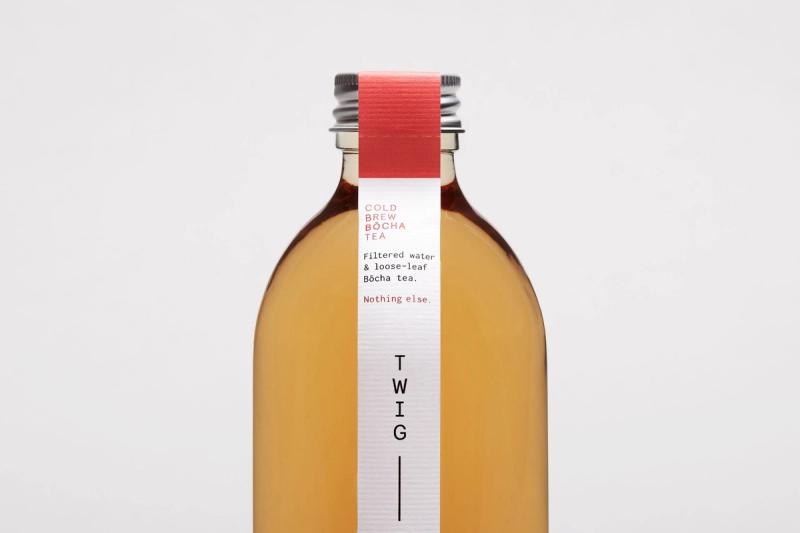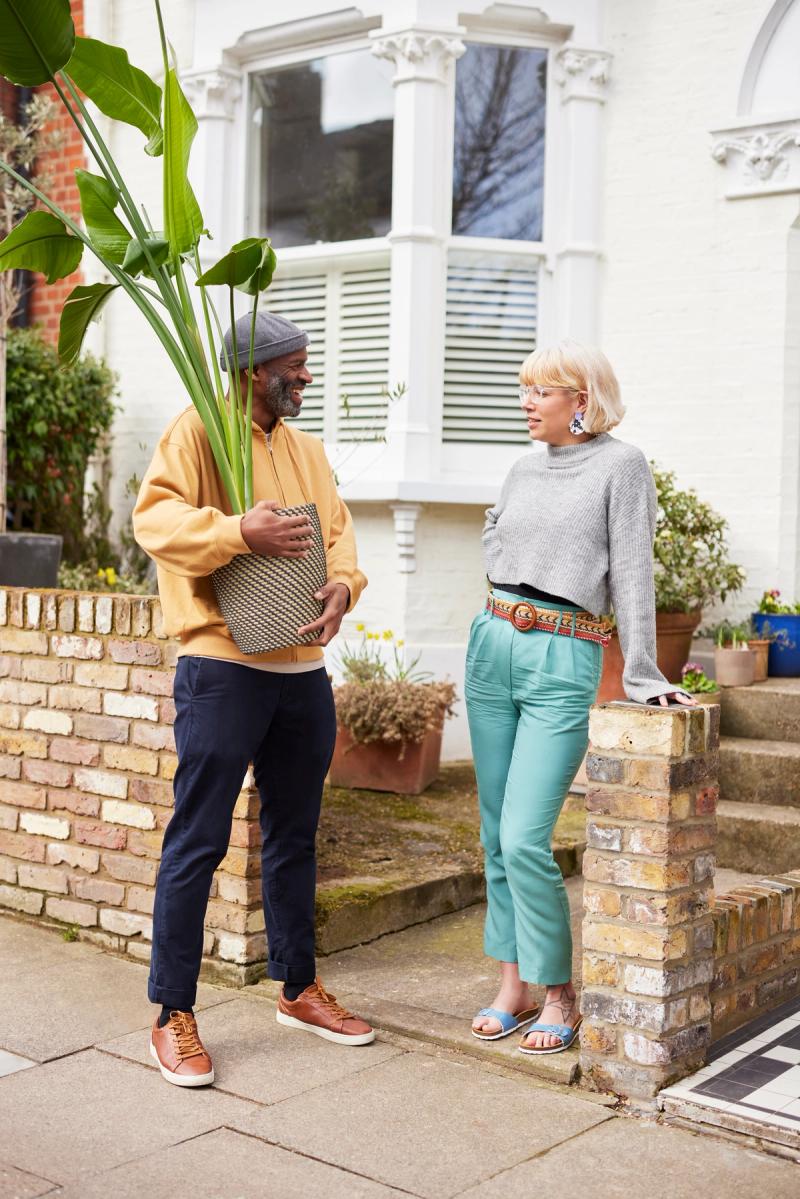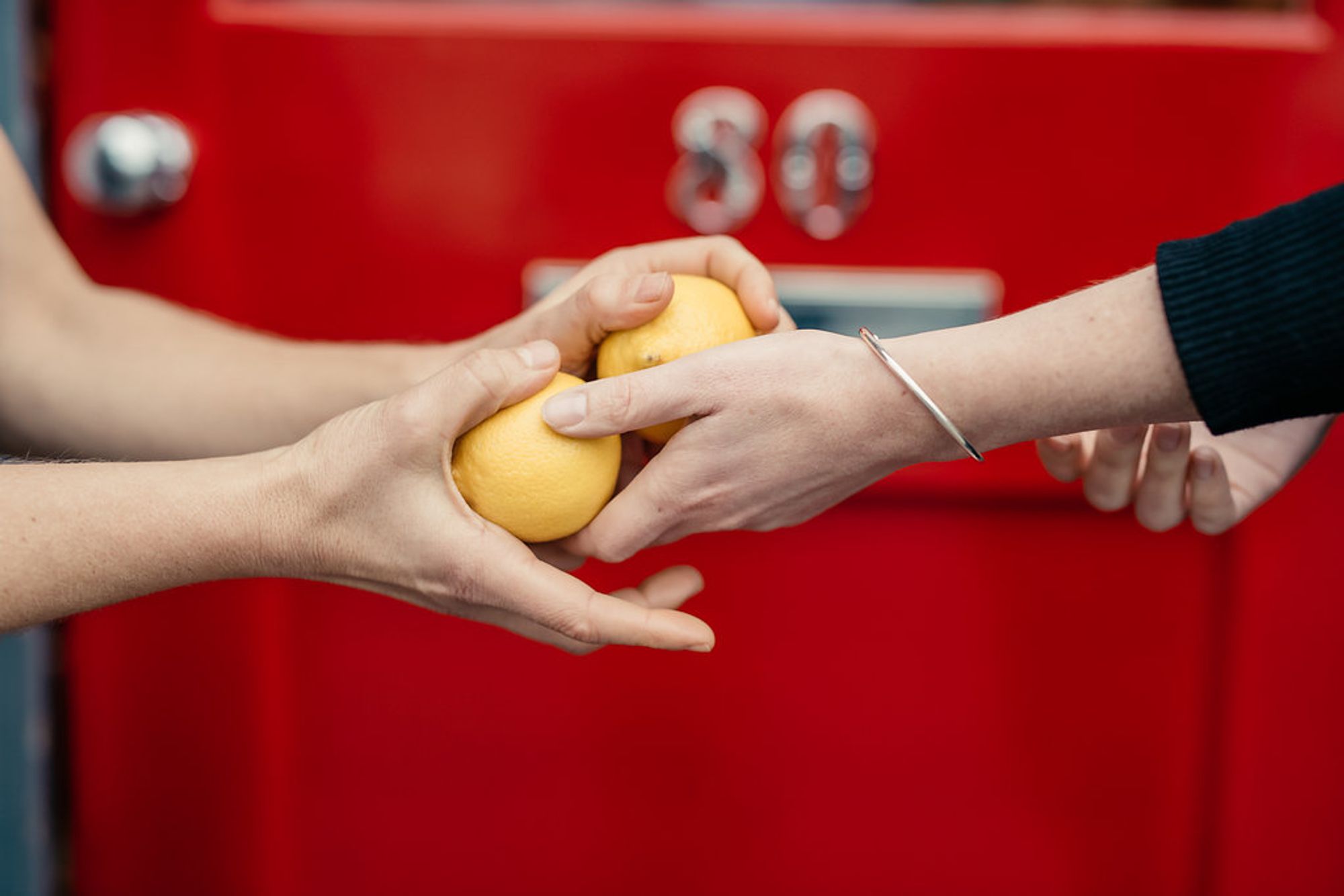Investing in branding isn’t just about the metrics, but good creative work should have a measurable effect on the business. We caught up with OLIO Chief Brand Officer and AUFI client Iona Carter to chat about branding as a ‘multiplier’ on everything a company does.
From setting up her own cold brew tea business to heading up brand at Olio, Iona Carter’s career has given her a lens on both sides of the client/agency equation. Prior to her current role, Carter was part of Sony Music’s first in-house creative agency, followed by time on the leadership team at travel company Plum Guide, which she helped grow from Seed to Series C. Now at Olio – an app that lets neighbourhoods give away, lend and sell food and household items – Carter uses a mix of instinct and rigorous analytics to guide the company’s branding.



- Emma TuckerYou’ve got an interesting balance of experience that includes the practicality of setting up and running a business, and then working on the strategy and creative side of a brand. Has working on both sides of the coin been valuable?
Iona CarterThere’s often a sense that people in the brand marketing world are lacking in commercial nous – the appetite to engage in the nuts and bolts of the business P&L, and discipline when it comes to data and analytics. That’s something I’ve proactively worked to define myself against. When I go into a business like Olio, I put a huge emphasis on measurement. Landing the story around ROI is a critically important thing for brand marketers to get right.
“Executed well, brand is a multiplier on all your metrics. Yes, it’s more difficult to measure with pinpoint accuracy vs pure performance marketing, but there’s no question around its impact.”
Iona Carter – Chief Brand Officer @ Olio and AUFI Client
- ETThinking about how you’ve had your foot on either side of the line, what’s your biggest bit of advice from the brand side to founders?
ICA helpful way to think about brand is as a multiplier on everything you do. It doesn’t matter if it’s your customer acquisition funnel, your talent acquisition funnel, your investor conversations, or your B2B pipeline. Executed well, brand is a multiplier on all your metrics. Yes, it’s more difficult to measure with pinpoint accuracy vs pure performance marketing, but there’s no question around its impact. I would add here that people tend to have quite a narrow conception of what brand is – i.e. heavy ATL spending, and sexy ad creative – and whilst that is a part of it, brand is so much more holistic than that. Brand is about getting crystal clear on who you are, and how you show up in the world; and manifesting that unique DNA across every touchpoint of the customer experience.
Brand is how your customer service agents pick up the phone. It’s the way you engage with your audience on social. It’s how you sign off your B2B CRM comms. Most people don’t have any direct engagement with a brand unless something’s gone wrong, and the defining thing they’ll remember is the experience of their dialogue with the customer team. Playing the brand across all these touchpoints in a really thoughtful way is what builds true organic flywheels and customer virality.
Measuring the impact of this sort of brand investment is not going to be as directly attributable as performance spend of course, but it can be measured, and you need to believe in its potential for your business in order to make the longer dated investments required.
- ETI always think of brands as whole entities, and customer service frequently feels like it’s a neglected part of that. Often you’ll have a great experience everywhere until you have to call them, and it kills the relationship.
ICOne of the upsides of the new world we’re in now – and, by that, I mean an environment where ‘growth at all costs’ is no longer what’s valued by start-up investors – is that there is more emphasis on what Sarah Tavel calls ‘Happy GMV’ and the lifetime value of a customer. It tips the scales towards getting the customer experience right rather than acquiring as many customers as possible, often unprofitably, and showing topline user growth. I think that created bad habits in the marketing profession. And my view is that will start to change now.


“What I’ve introduced within my team is this idea that there’s no single metric you can use to measure the impact of brand or creative, but what you should be doing is establishing a consistent set of metrics that sit across the funnel, that you measure on a regular cadence over time.”
Iona Carter – Chief Brand Officer @ Olio and AUFI Client
- ETI was interested earlier when you mentioned measurement, because the impact of creative work is famously hard to measure. Can you tell me a bit more about this stringent approach to analytics you’ve introduced at Olio, and how that’s helping the business?
ICWhat I’ve introduced within my team is this idea that there’s no single metric you can use to measure the impact of brand or creative, but what you should be doing is establishing a consistent set of metrics that sit across the funnel, that you measure on a regular cadence over time. That is the way to get a read on the performance of whether what you’re doing is working. It’s an aggregate, composite view over time, but the numbers do respond to the activity. There will always be some noise in those metrics, but viewed as a whole they give you a pretty good steer on performance and on how you’re impacting the commercial outlook of the business.
- ETThis might be a controversial question, but is there a risk, when you’re looking at these measurements, that it boils creative work down to a single question of whether it’s effective? Does that run the risk of killing the spark?
ICThat’s why I would always look at that set of consistent macro metrics, rather than, for example, looking at a piece of digital ad creative with two versions, running them on Meta, and concluding that the one delivering the best click-through or conversion rate is better. If the objective of the creative is upper funnel brand-building, that’s when you’ll run into problems. Typically, the creative with lower production values, or a more direct response message, will perform better from a click through or conversion perspective. In these contexts, there needs to be a more mature, longer-term view on what we’re trying to achieve, what message we’re trying to land, and what brand we’re trying to build. It’s about having the conviction to continue investing in that kind of advertising, even if the immediate ROI doesn’t look as compelling.


- ETWhat are the big differences investing in branding, or design or creativity can bring to a business?
ICThere’s a famous exercise from an ad agency where the ECD asked the team to bring in their all-time favourite pieces of creative work – from any era, from any agency, in any market. Everybody brought their examples in, pinned them up on the wall, and in turn spoke about what they personally found so moving, inspiring and effective in each piece. Then the ECD asked them to pin on the wall alongside the work they had delivered that year as an agency – and compare and contrast. It’s an effective way to land the point that, while you might not be able to properly measure the full emotional impact of truly standout creative, design or branding, you can certainly feel it. The difference in tone in the room between the way people talked about the first set of examples vs the second set was stark. It’s the difference between winning only minds vs hearts and minds. You only have to look at brands who do brand-building very well, like Airbnb, to see the impact difference.
“The reality is that we can’t just turn consumerism off overnight. The question is whether as a society we can shift behaviour towards a model of consumption that’s based on sharing and redistributing.”
Iona Carter – Chief Brand Officer @ Olio and AUFI Client
- ETI wanted to talk about Olio, and a shift to a model that’s focused more on reusing, recycling and recirculating. Are we moving to a place where people are more interested in sustainable ways of buying and owning things?
ICThe reality is that we can’t just turn consumerism off overnight. The question is whether as a society we can shift behaviour towards a model of consumption that’s based on sharing and redistributing the resources that already exist in our local communities, versus what we call virgin consumption (i.e. buying things new). We’ve spent a lot of time thinking about it at Olio, and as a marketer it’s a fascinating challenge to be working on, because it’s about driving behaviour change – not just selling a value proposition.
There’s lots of thinking that’s been done on how to do this, and what ingredients precipitate the positive tipping points where you see mass adoption of a new kind of behaviour. I think the communications, marketing and PR industry haven’t done a particularly effective job of fulfilling that brief, and all too often brands and organisations in the sustainability space succumb to hackneyed tropes and clichés, or fall into the trap of doom-mongering and guilt-tripping. From the research, that is categorically not the most effective approach. There’s been a bit of a failure when it comes to creativity and innovative thinking about how to rewrite the consumption paradigm, and win hearts and minds around more sustainable solutions.



“There’s been a bit of a failure when it comes to creativity and innovative thinking about how to rewrite the consumption paradigm, and win hearts and minds around more sustainable solutions.”
Iona Carter – Chief Brand Officer @ Olio and AUFI Client
- ETTo be optimistic, does that mean there’s huge potential still for businesses and agencies to think creatively, and encourage that change?
ICExactly. There’s a wide open space for a brand to show up and set an inspiring leadership example for others to follow. The climate crisis is a major challenge of our time, but with big challenges come big opportunities. I believe strongly that what we all need now are voices of optimism reminding people that change is possible, that hope is power. We’re going to get there by coming together and connecting through everything that unites us, rather than what separates and polarises us. Our industry has been so incredibly effective at creating desire to drive the engine of consumerism forwards. The interesting question is now how we connect the dots to drive behaviour change and make sustainable consumer choices undeniable in their desirability. That’s an incredibly exciting brief for the world’s top creatives and communications talent to crack.



